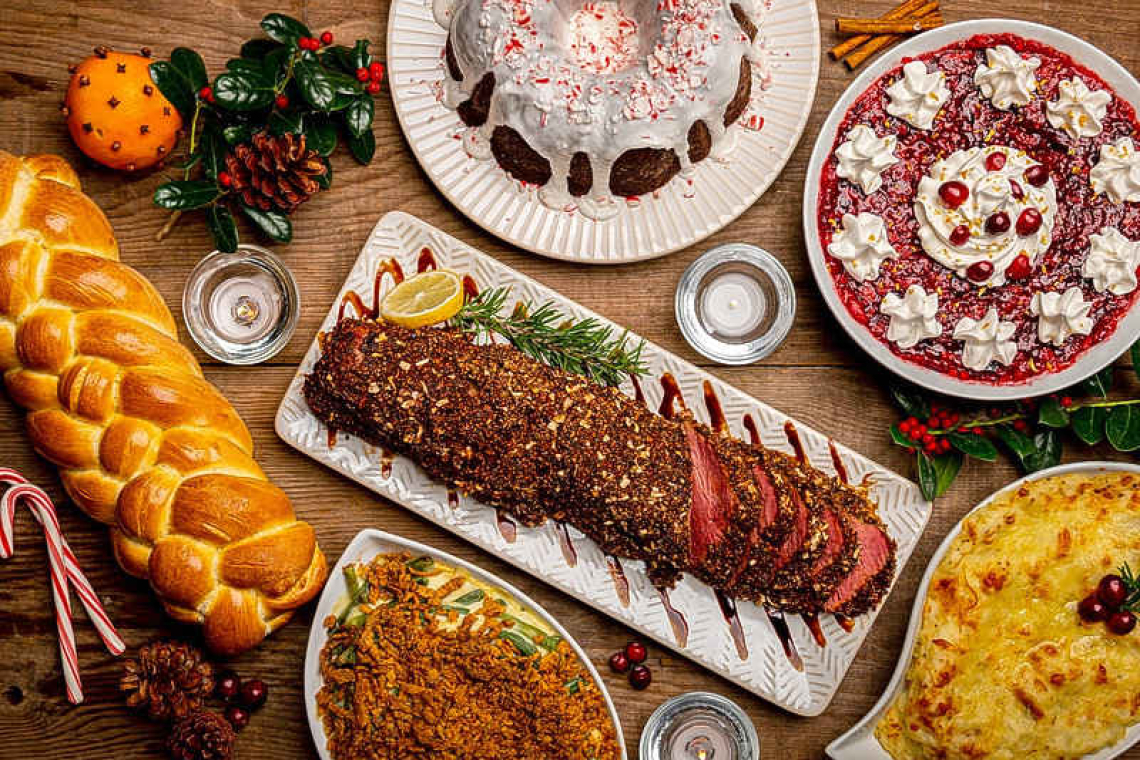By Dr. Colin Michie FRCPCH University of Central Lancashire
Partying can have consequences. One of them can be fatal. You can learn how to save a life using back blows and abdominal thrusts.
Most of us look forward to December’s parties in our homes, churches, hotels and beaches. Once more, we can become our six-year-old selves. Food and drink are treasured treats, savoured goals to share with others. Come the day, most of us often find ourselves eating and drinking more than we planned.
Is this overconsumption justifiable feasting in December? Can we excuse ourselves and allow ourselves some excess? Yes! Our bodies are built and work from ancient thrifty genes that help cope, metabolically, with feast and famine. Just a few generations ago, our predecessors experienced deprivations and famine that few survived. Those, whose metabolisms survived food shortage, those, who had children in times of starvation, are our ancestors. Their genes still drive us every day, whether during midsummer physical training or through chocolate-laden advent calendars in December. Those same genes will continue to work as though our lives depend on them. Because of this background, when it comes to food, our brains may not recognise or signal with authority when we have had enough, that we should not eat any more during that Christmas dinner.
The very smells of foods start up our digestive processes, from the production of saliva that helps digest sugars, to insulin from the pancreas that directs sugar trafficking from the bloodstream. A balance between hormones should regulate our intakes. Ghrelin from the stomach increases our appetite and hunger. Leptin from our fat tissues informs us over a period of days that we have consumed enough calories. Leptin should make us less interested in food. A network of nerves informs the gut and the brain when the stomach is filling up to its maximum of about a litre. Large meals divert blood to the stomach and intestines, making us feel sleepy. Those thrifty genes can deal with feasts, employing these elegant systems to tell us to stop eating.
Public health doctors record higher rates of death from heart disorders around the festive season. December feasting is often blamed for this “Christmas Effect”. However, this cannot be the whole story. In Australia, for example, it seems it is the cold weather in July, rather than Christmas dinners in December, that causes more heart attacks. In Sweden, it is those suffering emotional distress in December who were admitted to Hospital with cardiac events – not those who had eaten more!
Rarely, overeating kills by choking, a condition once referred to as the café-coronary, or bolus death. This can happen quickly; it resembles a myocardial infarction. After chewing, a lump or bolus of food should be swallowed into the oesophagus. If swallowing is not co-ordinated, food may fall into the larynx and block the airway. This can happen if someone eats too much, eats too fast, does not chew their food, moves, talks or is distracted while eating. It is also a problem in young children who typically choke on small toys, or those with conditions such as Parkinson’s disease that might affect their swallowing. Choking is a significant cause of accidental death. Typically, it starts with coughing, prevents normal breathing and causes panic to all. If the blockage is not coughed out quickly, this becomes a medical emergency.
Providing the sufferer is conscious and permits you to do so, the first approach is to deliver five blows to their back, keeping them upright and supporting their chest from the front. Blows are directed between the shoulder blades, using the heel of your hand. This often succeeds in helping them expel the material from their airway. If not effective, you should then perform five abdominal thrusts. This involves standing behind them, and using both of your hands held together, pulling towards yourself so as to compress their upper abdomen in a thrusting movement.
The aim is to suddenly increase the pressure in their chest to help them cough out the obstruction. These thrusts are also referred to as the Heimlich manoeuvre. An individual can perform a Heimlich manoeuvre on themselves by compressing their upper abdomen on a chair back. If five abdominal thrusts are ineffective, emergency services should be called and the cycle of back blows and thrusts continued. Should the victim lose consciousness, cardiac resuscitation must be started.
We should all learn this sequence, because frequently those who choke cannot find assistance. Performing abdominal thrusts can rarely cause trauma to ribs, heart, abdominal organs and blood vessels so it is worth having some training on a manikin to hone your skills and having your patient checked over after they have recovered!
Wishing you safe partying and a peaceful Christmas.
Useful resources:
https://www.nhs.uk/common-health-questions/accidents-first-aid-and-treatments/what-should-i-do-if-someone-is-choking/
Dr. Colin Michie is currently the Associate Dean for Research and Knowledge Exchange at the School of Medicine in the University of Central Lancashire. He specializes in paediatrics, nutrition, and immunology. Michie has worked in the UK, southern Africa and Gaza as a paediatrician and educator and was the associate Academic Dean for the American University of the Caribbean Medical School in Sint Maarten a few years ago.







